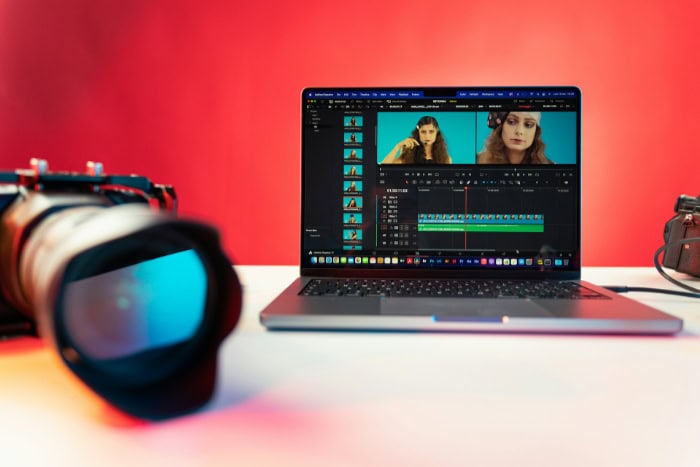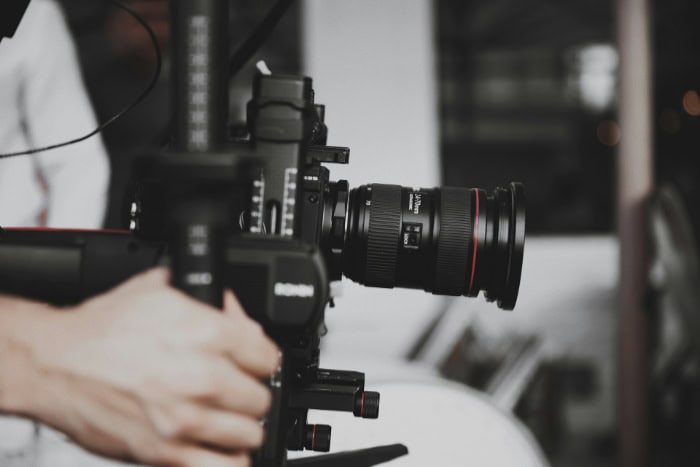Aspect Ratio: What It Is and Why It Matters

Understanding aspect ratio is essential for anyone involved in visual media, whether as a creator, consumer, or enthusiast. It plays a significant role in how images and videos are framed, affecting not just aesthetics but also the overall viewer experience.
Different media formats—like television, film, photography, and social media—employ various aspect ratios, each serving a specific purpose and enhancing storytelling in unique ways.
Definition of Aspect Ratio
Aspect ratio refers to the proportional relationship between the width and height of an image or video. It is a crucial parameter that affects how visual content is displayed and perceived.
In simple terms, aspect ratio can be thought of as the shape of a rectangle that outlines an image or a screen. It helps in determining how an image will fit into a given space, whether that be a television screen, a computer monitor, or a photograph.
Typically, aspect ratio is expressed in a width:height format. For instance, an aspect ratio of 16:9 means the width is 16 units while the height is 9 units.
This format provides a straightforward way to understand the proportions of an image. The first number represents the horizontal measurement, while the second represents the vertical.
This ratio is fundamental in various fields, including television and film production, photography, and graphic design, as it directly influences the composition and presentation of visual media.
Representation of Aspect Ratio
Aspect ratios are often represented as fractions or ratios that indicate the relationship between the two dimensions. For example, a common aspect ratio for widescreen television is 16:9, while traditional television might have a 4:3 aspect ratio.
These numbers can be easily compared: a 16:9 ratio signifies a wider image compared to a 4:3 ratio, which is more square in shape.
In many digital contexts, aspect ratios are also crucial for ensuring that images and videos display correctly across different devices. For instance, a video shot in a 16:9 aspect ratio will fill the screen of most modern televisions but may leave black bars on the sides when viewed on a 4:3 display.
This representation plays an essential role in content creation, where selecting the appropriate aspect ratio can enhance the viewer's experience and maintain the intended visual integrity of the media.
Common Aspect Ratios and Their Applications

Various aspect ratios are commonly used across different forms of media, each serving distinct purposes and enhancing the viewer's experience. Understanding these standard ratios can help both creators and consumers appreciate the nuances of visual storytelling.
Television and Film
In the realm of television and film, two of the most widely adopted aspect ratios are 16:9 and 2.35:1. The 16:9 aspect ratio, also known as widescreen, has become the standard for high-definition television and most online video platforms.
This ratio provides a broader field of view, making it ideal for showcasing action and expansive landscapes. It is particularly effective for modern storytelling, allowing for dynamic compositions that engage viewers.
On the other hand, the 2.35:1 aspect ratio is commonly found in cinematic films, often referred to as anamorphic format. This wider ratio enhances the visual impact of films, making it suitable for epic narratives and grand visuals.
It allows filmmakers to create immersive experiences that draw the audience into the story. Movies shot in this format often feature sweeping shots and elaborate set pieces, maximizing the cinematic experience.
Photography
In photography, aspect ratios such as 4:3 and 3:2 are common. The 4:3 ratio is frequently used in digital cameras and provides a balanced composition, making it ideal for portrait photography and everyday snapshots.
This format allows photographers to capture subjects with a pleasing arrangement, facilitating effective framing and depth.
The 3:2 aspect ratio is typically associated with 35mm film and many DSLR cameras. It strikes a good balance between width and height, making it versatile for various subjects, including landscapes and portraits.
This ratio is favored for its ability to create visually appealing images that can be easily printed in standard sizes without significant cropping.
Social Media
Social media platforms have introduced unique aspect ratios to accommodate different types of content and user interactions. The 1:1 aspect ratio, or square format, is widely used on platforms like Instagram.
This ratio ensures that images and videos are displayed uniformly on users' feeds, making it an effective choice for brand consistency and visual appeal.
For stories, particularly on platforms like Instagram and Snapchat, the 9:16 aspect ratio is commonly employed. This vertical format aligns with how users naturally hold their smartphones, maximizing engagement and interaction.
It is particularly effective for short, immersive content, allowing creators to capture attention quickly and convey messages in a visually striking manner.
Technical Considerations

Aspect ratio plays a significant role in digital media, influencing both the visual quality of content and its compatibility across various playback devices.
Relationship Between Aspect Ratio and Resolution
Resolution refers to the detail an image holds, typically measured in pixels, while aspect ratio defines the proportional relationship between the width and height. The two are interrelated, as the resolution must be adjusted according to the chosen aspect ratio to achieve optimal visual quality.
For example, a 1920×1080 resolution corresponds to a 16:9 aspect ratio, which is commonly used in HD television. If a creator decides to change the aspect ratio to 4:3, they may need to adjust the resolution to 1440×1080 to maintain a similar visual quality.
Maintaining an appropriate resolution for a selected aspect ratio is crucial for ensuring that images and videos appear sharp and clear. A mismatch can lead to pixelation or blurring, detracting from the overall viewing experience.
Therefore, when producing or editing content, it is important to consider how the aspect ratio will affect the resolution and, consequently, the fidelity of the visual output.
How Aspect Ratio Affects Visual Quality and Playback Compatibility
Aspect ratio directly influences visual quality and playback compatibility across devices. When content is created in a certain aspect ratio, it can look distorted or cropped if displayed on a screen with a different ratio.
For instance, a video formatted in 16:9 may display with black bars on the sides when viewed on a 4:3 screen, or it may be stretched to fit, resulting in a distorted image.
Moreover, certain platforms and devices have specific aspect ratio requirements. A film shot in a 2.35:1 ratio, made for cinematic viewing, may not translate well to a standard television screen without adjustments.
This mismatch can impact how viewers experience the content. Creators must consider the platforms where their work will be shown, ensuring that the chosen aspect ratio aligns with the playback environment to maintain visual integrity.
Tools and Software for Adjusting Aspect Ratios
Several tools and software solutions are available to assist creators in adjusting aspect ratios effectively. Video editing programs like Adobe Premiere Pro and Final Cut Pro offer features that allow users to change the aspect ratio of their footage easily.
These programs provide options to crop or resize videos to fit specific dimensions without significantly compromising quality.
In photography, software such as Adobe Lightroom and Photoshop includes features that enable photographers to crop images to the desired aspect ratio. These tools help ensure that the final product maintains its visual appeal while adhering to the necessary specifications.
For web content and social media, various online platforms and applications provide templates optimized for specific aspect ratios. Canva and similar graphic design tools allow users to create images tailored for different social media formats, ensuring that content is visually appealing and appropriately formatted for its intended audience.
Challenges and Solutions

Selecting the correct aspect ratio is crucial for visual media, as using an inappropriate ratio can lead to several issues that negatively impact the quality and effectiveness of the content.
Common Issues from Incorrect Aspect Ratios
One of the most prevalent problems arising from incorrect aspect ratios is distortion. When an image or video is stretched or compressed to fit an incompatible screen, it can appear warped, leading to a less professional look.
For example, a video shot in a 16:9 format that is displayed on a 4:3 screen may be incorrectly resized, distorting the composition and making it difficult for viewers to engage with the content.
Cropping is another significant issue. When an image or video is cropped to fit a specific aspect ratio, vital parts of the composition can be cut off, altering the intended message.
For instance, if a portrait is cropped to fit a square format without careful consideration, important facial features or contextual elements may be lost, detracting from the overall impact of the image.
These issues can frustrate both creators and viewers, emphasizing the importance of selecting the right aspect ratio from the outset or adapting content correctly when necessary.
Best Practices for Selecting Appropriate Aspect Ratios
To avoid the challenges associated with incorrect aspect ratios, creators should consider a few best practices during the content creation process. First, it is essential to identify the primary platform or medium for which the content is intended.
Different platforms have established preferred aspect ratios, so aligning with these specifications is crucial for ensuring optimal display.
For instance, if a creator plans to share videos on social media, they should consider the platform's requirements, such as a 1:1 ratio for Instagram posts or 9:16 for stories. Planning content around these ratios helps avoid the need for significant adjustments later.
Additionally, creators should maintain flexibility during the production process. When shooting video or capturing images, leaving some extra space around the subject can allow for easier cropping or resizing in post-production.
This foresight can help preserve important details and enhance the overall visual quality.
Methods for Adapting Existing Content
When existing content needs to be adapted to fit different aspect ratios, several methods can help maintain quality. One effective approach is to use cropping strategically.
Instead of simply resizing an image or video, creators can analyze the composition and select the most essential elements to keep. This approach allows for a more thoughtful adjustment that preserves the intent of the original content.
Another method is to add borders or backgrounds to fill empty space when adjusting to a different aspect ratio. For instance, if a video in a 16:9 format is displayed in a 1:1 format, adding blurred backgrounds or solid colors can fill the extra space without compromising the visual quality.
This technique can enhance the aesthetic appeal while ensuring that the central content remains the focus.
Finally, utilizing advanced editing software can facilitate adjusting aspect ratios more efficiently. Programs like Adobe Premiere Pro or Photoshop provide tools that allow creators to resize and reposition content while maintaining clarity.
These tools can help ensure that the final output meets the desired specifications without losing quality or impact.
Conclusion
Recognizing the importance of aspect ratio is vital for anyone involved in visual media. It influences how images and videos are framed, affecting not only the aesthetic appeal but also the viewer's overall experience.
Various aspect ratios serve specific purposes across different platforms, from the cinematic feel of 2.35:1 in film to the square format of 1:1 for social media posts.
Addressing the technical aspects of aspect ratio, including its relationship with resolution and visual quality, enhances content creation efforts. Creators can avoid common pitfalls by selecting appropriate ratios from the start and employing effective methods to adapt existing content.
The thoughtful application of these principles can lead to visually engaging media that resonates with audiences and maintains clarity across various viewing platforms.
Mastery of aspect ratios ultimately empowers creators to communicate their messages more effectively and enrich the viewer's engagement with their work.


